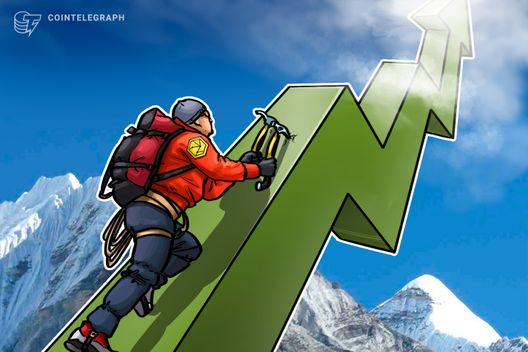Bitcoin hits $14.7K — 3 reasons this rally may see new all-time highs
From November to December in 2017, the price of Bitcoin (BTC) experienced a parabolic uptrend to a new all-time high at $20,000.
There are three reasons Bitcoin might see a similar trend in the upcoming months. First, the post-halving cycle is coming into effect. Second, the relative strength index (RSI) shows room for a bigger rally. Third, the rally is not overheated, at least in the derivatives market.
Long-term RSI shows Bitcoin not overbought
PlanB, the creator of the Stock to Flow (S2F) indicator, shared a long-term RSI chart of Bitcoin. The indicator, which measures whether an asset is overbought or oversold, shows BTC is still at a neutral level.

Although Bitcoin has rallied from $10,500 to $14,600 within a month, the RSI shows there is room for more upside.
For instance, in December 2017, the RSI of Bitcoin surpassed 95 points. When the RSI exceeds 75 points, traders start to consider the asset to be overbought. Currently, the long-term RSI of BTC shows it is under 70 points.
Post-halving cycle is materializing like the past
In 2017, one of the primary narratives around the upsurge of Bitcoin was its halving in 2016. A block reward halving, which occurs approximately every four years, causes the rate at which BTC is produced by miners to drop by half.
The slower production of Bitcoin leads to an overall drop in BTC inflows into exchanges, leading the supply to drop.
The latest halving occurred in May 2020, and in 2017, Bitcoin started to rally months after the activation of the halving. The ongoing rally of Bitcoin goes in line with its previous macro rallies.
Not an overheated rally, fewer sellers in the spot market
Throughout the past five days, the funding rate of Bitcoin has stayed negative on major exchanges, particularly on Binance Futures. This shows that the majority of the futures market has been shorting BTC.
A rally is considered overheated when the futures funding rate begins to increase beyond the average rate, which is 0.01%. In recent weeks, the funding rate of BTC has been hovering between -0.01% to 0.01%, showing a rather neutral derivatives market.
In addition to the uncrowded futures market, there are also fewer sellers in the spot market. According to TensorCharts, there are some sell orders at $15,000, but no major sellers at that level and above it.

Since there is little resistance between $15,000 and $20,000, this raises the probability of hitting a new record-high in the coming months.
If the same post-halving cycle as 2017 follows, then Bitcoin would theoretically reach its peak in the second quarter of 2021. If that is the case, there is a chance that BTC could far exceed $20,000.
The ongoing rally depicts an immensely strong momentum for Bitcoin because miners have started to sell BTC. This shows the market is absorbing the selling pressure from miners.









